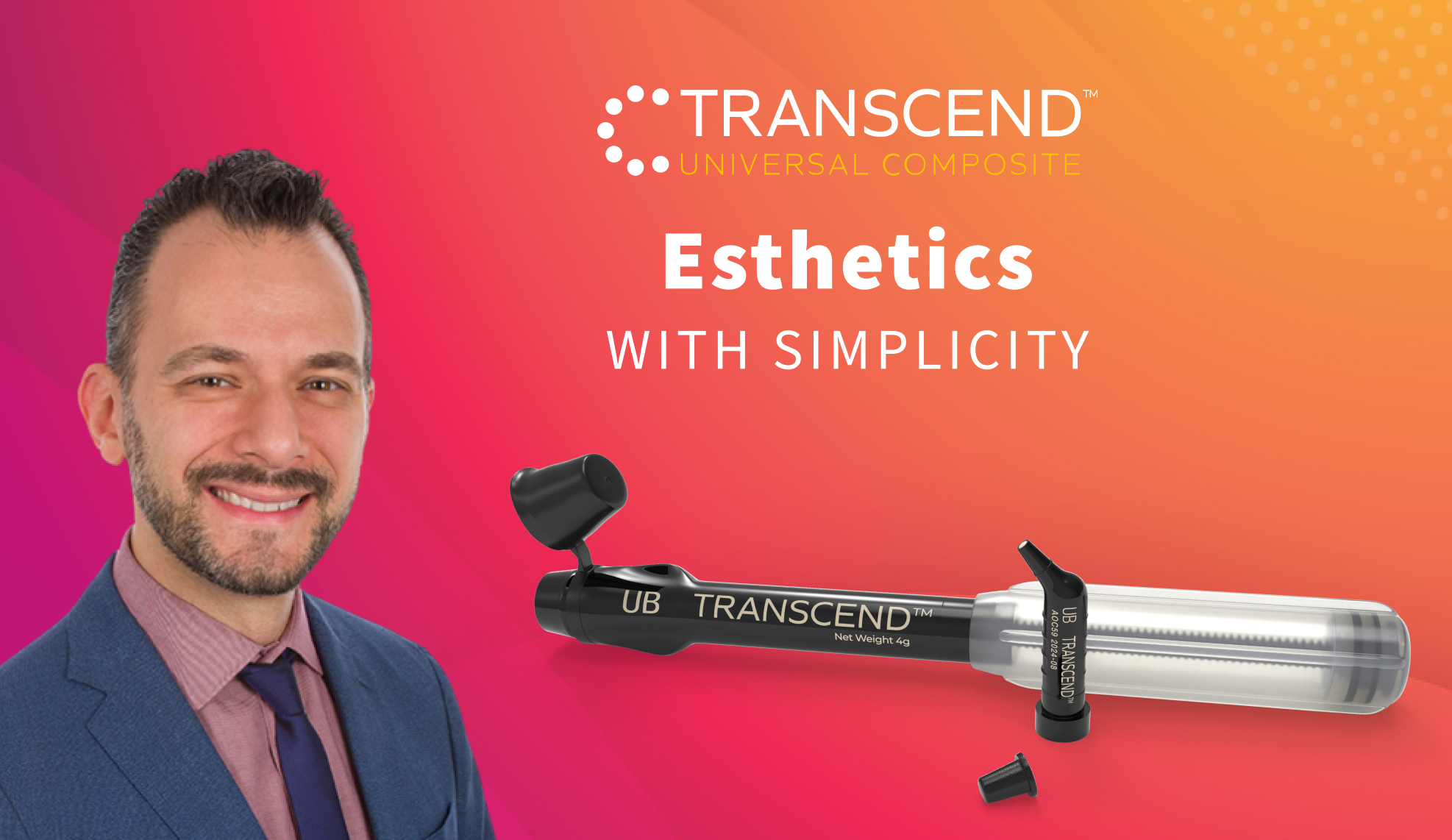By Dr. Rafael Beolchi
Knowing which class of composites should be used in each specific clinical situation is paramount for the success of direct placed esthetic restorations. In the recent evolution in composite resin technology a new class of materials known now as color-matching universal composites emerged. The idea behind these materials is that they should provide for pronounced blending/matching with the underlying substrate, drawing from the surrounding natural tooth structure, thus resulting in better color blending between tooth and restoration.
The main clinical advantage of these universal composites is to facilitate shade matching by the clinician, simplifying this important clinical challenge. A secondary, yet important convenience is to diminish the armamentarium of different composites and shades needed for those everyday restorations.
It is of course fundamental for the clinician to understand the clinical requirements and when this new technology will serve her/him best. The primary focus of a body shade is to try and hit a compromise in opacity and chroma between enamel and dentin shades because the majority of teeth are close to A2.
Some of the already available materials fall short, in that they may: need a blocker shade in some clinical situations, namely deeper posterior restorations, some anterior restorations, such as Class III and IV.
This year Ultradent Products presented a new material that not only provides good color matching, but also promises a superior control of the balance between opacity/translucency. In other words, a color-matching universal composite that does not require an opaque blocker for deeper restorations and has a wider range of shades in which it blends, a material called Transcend™ universal composite.
This new composite contains monomers and fillers with similar refractive indices, a technology called Resin Particle Match™. The use of well-matched monomers and fillers allow for an ideal balance of opacity/translucency, and ultimately, a better expression of the color pigments within the composite. In other words, by having a matching refractive index (The refractive index describes how much light is bent, or refracted, when entering and exiting a material). In our composite we are better able to mimic the light refraction of the tooth thus giving us the blending ability with this composite.
It is important to note that for some more challenging clinical situations, such as the reconstruction of anterior teeth with noticeable differences in color between cervical and incisal areas (opaque and translucent regions), and Class III and IV cases that lack the tooth structure, the traditional layering technique might still be a required. Due to these shade matching challenges, Transcend is also available in dentin and enamel shades, and has also been designed for enhanced optical integration between composite and remaining dentition.
Case report
A female patient, around 46 years old was in need of the replacement of two posterior restoration: a deeper Class II (MODB) on the first left lower molar, and a simpler, more shallow Class I on the second left lower molar. Both restorations were approximately twenty years old, with no sensitivity and no secondary caries. Patient presented great oral hygiene, with no other oral problems.
 |
 |
|
Before: Failed composite restorations on both lower molars. |
DermaDam™ rubber dam isolation after removal of the old restorations. |
 |
 |
|
Curing of the bonding system (Peak Universal Bonding) flowable. |
After curing PermaFlo flowable composite, Transcend™ composite Universal Body shade was used to create the missing mesial and distal walls. |
 |
 |
|
Both restorations finalized. Note the integration of the single Universal Body shade. |
Final aspect of the restorations after occlusal adjustments and polishing. Note how the composite blends with the surrounding tooth structures and gives an esthetic and natural appearance on the proximal boxes without the use of any blocker shades. |
 |
|
|
Buccal view of the finalized restorations. Note the integration of the Transcend composite Universal Body shade and tooth structure on the buccal wall of the first lower molar. |








